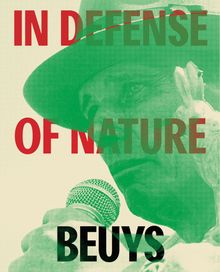| |||||||||||||||||||||||||||||||||||||||
ARTIST MONOGRAPHS
|
|
in stock $49.95 Free Shipping UPS GROUND IN THE CONTINENTAL U.S. |
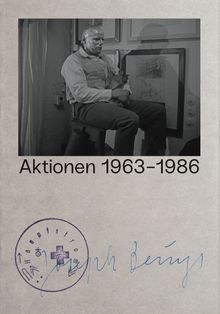 Joseph Beuys: Actions 1963–1986 DVD
Joseph Beuys: Actions 1963–1986 DVD
Published by Walther König, Köln.
Edited with text by Peter Weibel.
German artist Joseph Beuys (1921–86) revolutionized art with his legendary actions, now collected in full for the first time on DVD, including previously unreleased materials. The accompanying publication documents Beuys’ actions that were not captured on film or video, illustrated by texts and photographs.
PUBLISHER
Walther König, Köln
BOOK FORMAT
DVD (NTSC & PAL), 7 x 10 in. / 400 pgs.
PUBLISHING STATUS
Pub Date 4/11/2023
Active
DISTRIBUTION
D.A.P. Exclusive
Catalog: SPRING 2023 p. 147
PRODUCT DETAILS
ISBN 9783753302591 SDNR40
List Price: $120.00 CAD $168.00
AVAILABILITY
In stock
in stock $120.00 Free Shipping UPS GROUND IN THE CONTINENTAL U.S. |
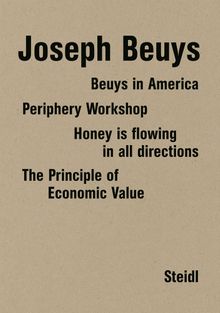 Joseph Beuys: Four Books in a Box
Joseph Beuys: Four Books in a Box
Published by Steidl.
Edited with photographs by Klaus Staeck, Gerhard Steidl.
Each volume in this boxed set explores a specific Joseph Beuys (1921–86) project, offering an insider’s view of some of his most original works and celebrating the extraordinary 18-year collaboration between Beuys, Klaus Staeck and Gerhard Steidl.
PUBLISHER
Steidl
BOOK FORMAT
Slip, clth, 4 vols, 8.75 x 12.5 in. / 600 pgs / 11 color / 176 bw.
PUBLISHING STATUS
Pub Date 11/8/2022
Active
DISTRIBUTION
D.A.P. Exclusive
Catalog: SPRING 2023 p. 50
PRODUCT DETAILS
ISBN 9783969990988 SDNR40
List Price: $175.00 CAD $247.00
AVAILABILITY
In stock
in stock $175.00 Free Shipping UPS GROUND IN THE CONTINENTAL U.S. |
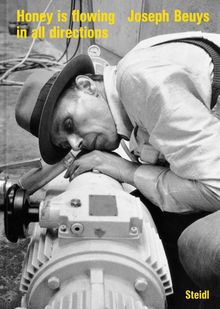 Joseph Beuys: Honey is Flowing in All Directions
Joseph Beuys: Honey is Flowing in All Directions
Published by Steidl.
Edited with text by Klaus Staeck. Text by Gerhard Steidl. Photographs by Gerhard Steidl.
Documenta, Kassel, 1977: a pump driven by two strong motors forces two tons of honey over a 55-foot-high pipe into a network of tubes that traverses the rooms of the Fridericianum Museum. This was the core of Joseph Beuys’ (1921–86) “Free International University,” which he brought to life at Documenta 6. Around his Honeypump in the Workplace Beuys created events that expanded his notion of art and starkly differentiated it from tradition. For Beuys, “workplace” meant talks, speeches, workgroup discussions and citizens’ action committees. For 100 days he tirelessly expressed his ideas on how art and society must necessarily change, filling numerous blackboards with texts, diagrams and musical scores. On June 28, 1977, Beuys invited Klaus Staeck and Gerhard Steidl to join him in servicing and maintaining his honeypump, which was carefully documented in the photographs of this book, first published in 1997 and now reconceived by Staeck and Steidl.
PUBLISHER
Steidl
BOOK FORMAT
Clth, 8.25 x 11.75 in. / 104 pgs / 86 bw.
PUBLISHING STATUS
Pub Date 6/28/2022
Active
DISTRIBUTION
D.A.P. Exclusive
Catalog: SPRING 2021 p. 104
PRODUCT DETAILS
ISBN 9783958299153 TRADE
List Price: $45.00 CAD $63.00
AVAILABILITY
In stock
in stock $45.00 Free Shipping UPS GROUND IN THE CONTINENTAL U.S. |
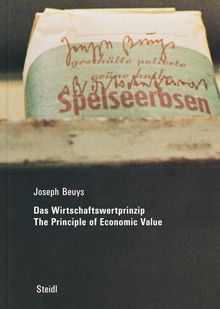 Joseph Beuys: Das Wirtschaftswertprinzip / The Principle of Economic Value
Joseph Beuys: Das Wirtschaftswertprinzip / The Principle of Economic Value
Published by Steidl.
Edited with photographs by Klaus Staeck, Gerhard Steidl. Text by Bart De Baere, Jan Hoet, Heiner Müller, Klaus Staeck.
A sumptuous room in the Museum of Fine Arts in Ghent in 1980: on its wall hang Flemish Old Master paintings, gleaming in their gilt frames; yet in the middle of the room stand industrial metal shelves, sparsely stocked with packets of everyday perishable products: salt, flour, olives and peas. Each packet is signed by Joseph Beuys and labeled with “1 economic value.” This was Beuys’ compelling installation Wirtschaftswerte (Economic Values), a declaration that culture had once and for all been reduced to economic property. The products selected were notably from the German Democratic Republic, heightening disparities between West and East, capitalism and socialism, high and low culture, the mundane and the luxurious. Das Wirtschaftswertprinzip / The Principle of Economic Value documents the original installation, which Beuys later recreated elsewhere and expanded in a series of multiples. Originally published in 1990, the book has now been redesigned by Klaus Staeck and Gerhard Steidl.
PUBLISHER
Steidl
BOOK FORMAT
Clth, 8.25 x 11.75 in. / 192 pgs / 70 color / 7 bw.
PUBLISHING STATUS
Pub Date 6/28/2022
Active
DISTRIBUTION
D.A.P. Exclusive
Catalog: SPRING 2021 p. 105
PRODUCT DETAILS
ISBN 9783958299146 TRADE
List Price: $45.00 CAD $62.00
AVAILABILITY
In stock
in stock $45.00 Free Shipping UPS GROUND IN THE CONTINENTAL U.S. |
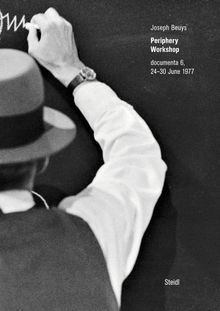 Joseph Beuys: Periphery Workshop
Joseph Beuys: Periphery Workshop
documenta 6, 24–30 June 1977
Published by Steidl.
Photographs by Klaus Staeck, Gerhard Steidl.
On April 27 1973, Joseph Beuys (1921–86) founded the Free International University for Creativity and Interdisciplinary Research, a staunchly antiestablishment institution designed to help individuals realize their creative potential (regardless of their social, economic and educational backgrounds); and for that creativity—through art—to foster social progress. As part of the university, Beuys staged an ambitious series of 13 workshops over 100 days at Documenta 6 in 1977, including the Migrant Workshop, the Violence and Behavior Workshop, the Nuclear Energy and Alternatives Workshop, and—the subject of this book—the Periphery Workshop.
At the heart of the Periphery Workshop were, in Beuys’ words, the themes of “peripheral regions Europe / enlarging the EEC / France-German axis / common strategies for the regions and the Mediterranean countries.” Visitors were invited to discuss and ask Beuys any question on these topics. Beuys filled dozens of blackboards with fascinating drawings, diagrams and thoughts—intricate artworks that form the basis of this book.
PUBLISHER
Steidl
BOOK FORMAT
Clth, 8.25 x 11.75 in. / 112 pgs / 55 bw.
PUBLISHING STATUS
Pub Date 6/28/2022
Active
DISTRIBUTION
D.A.P. Exclusive
Catalog: SPRING 2021 p. 105
PRODUCT DETAILS
ISBN 9783958299177 TRADE
List Price: $45.00 CAD $63.00
AVAILABILITY
In stock
in stock $45.00 Free Shipping UPS GROUND IN THE CONTINENTAL U.S. |
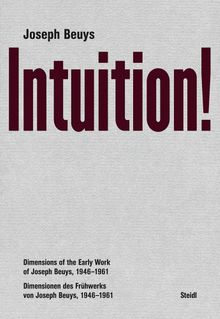 Joseph Beuys: Intuition!
Joseph Beuys: Intuition!
Dimensions of the Early Work of Joseph Beuys, 1946–1961
Published by Steidl.
Foreword by Harald Kunde. Text by Anne-Marie Bonnet, Susanne Figner, Volker Harlan, Karlheinz Koinegg, Bettina Paust, Petra Richter, Wolfgang Zumdick.
This book examines the crucial period between Joseph Beuys’ (1921–86) return to his hometown of Kleve after World War II at the age of 24 and his appointment as a professor at the Kunstakademie Düsseldorf in 1961. During this “incubation” phase, key themes relevant to his future work emerged, which structure this book: biography as material for artistic formation; poetry/romanticism; natural sciences: physics, chemistry, botany, zoology and geography; philosophy/anthropology and Steiner; economics, capitalism, labor, politics. The aim of this book, along with the 2021 exhibition of the same name at Museum Kurhaus Kleve for which it is the catalog, is neither to venerate a local saint of Kleve nor to topple an artist from an earlier generation. Instead it highlights the influences and ideas that saw Beuys develop from a “sensitive traditionalist” into a “visionary social sculptor.”
PUBLISHER
Steidl
BOOK FORMAT
Clth, 7.75 x 11.5 in. / 200 pgs / 160 color / 20 bw.
PUBLISHING STATUS
Pub Date 6/28/2022
Active
DISTRIBUTION
D.A.P. Exclusive
Catalog: SPRING 2021 p. 105
PRODUCT DETAILS
ISBN 9783958299009 TRADE
List Price: $65.00 CAD $88.00
AVAILABILITY
In stock
in stock $65.00 Free Shipping UPS GROUND IN THE CONTINENTAL U.S. |
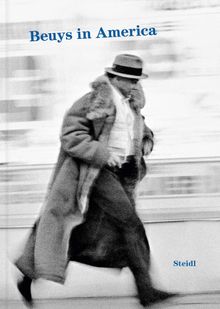 Joseph Beuys: Beuys in America
Joseph Beuys: Beuys in America
Published by Steidl.
Edited with photography by Klaus Staeck, Gerhard Steidl. Text by Klaus Staeck, Douglas Davis. Interview by Klaus Staeck.
On January 9 1974, Joseph Beuys (1921–86), together with Klaus Staeck and Gerhard Steidl, traveled for the first time to America. This trip was a carefully planned performance that took place in airplanes, taxis, hotels, universities and galleries, and was comprehensively documented in photographs and video. The tour began with a lecture at New York’s New School, visited by artists including Claes Oldenburg, Lil Picard and Al Hansen; the next stop was Chicago, the site of more controversial lectures and an unexpected performance reenacting the death of John Dillinger; then Minneapolis, with more conferences and discussions. Upon returning to Germany, the hundreds of photographs and many hours of videotape were assembled, but it was only in October 1985, shortly before his death, that Beuys finalized the sequence for the book. Originally published in 1987, this new Steidl edition has been wholly reconceived by Klaus Staeck and Gerhard Steidl.
PUBLISHER
Steidl
BOOK FORMAT
Clth, 8.25 x 11.75 in. / 224 pgs / 11 color / 176 bw.
PUBLISHING STATUS
Pub Date 6/28/2022
Out of stock indefinitely
DISTRIBUTION
D.A.P. Exclusive
Catalog: SPRING 2021 p. 104
PRODUCT DETAILS
ISBN 9783958299139 TRADE
List Price: $45.00 CAD $63.00
AVAILABILITY
Not available
STATUS: Out of stock indefinitely. |
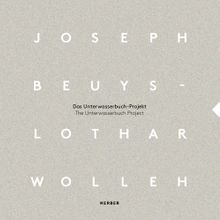 Joseph Beuys and Lothar Wolleh
Joseph Beuys and Lothar Wolleh
The Unterwasserbuch Project
Published by Kerber.
Edited with text by Antoon Melissen.
For his 1971 exhibition at the Moderna Museet, Joseph Beuys (1921–86) collaborated with photographer Lothar Wolleh (1930–79) on an artist’s book titled Das Unterwasserbuch Project. This two-volume publication contains a new edition of the project and a history of the collaboration.
PUBLISHER
Kerber
BOOK FORMAT
Paperback, 9 x 9 in. / 144 pgs / 100 color.
PUBLISHING STATUS
Pub Date 9/7/2021
Active
DISTRIBUTION
D.A.P. Exclusive
Catalog: FALL 2021 p. 181
PRODUCT DETAILS
ISBN 9783735607690 FLAT40
List Price: $59.95 CAD $79.95
AVAILABILITY
Out of stock
STATUS: Out of stock Temporarily out of stock pending additional inventory. |
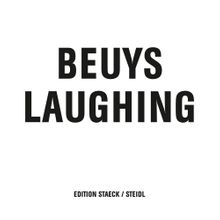 Joseph Beuys: Beuys Laughing
Joseph Beuys: Beuys Laughing
Published by Steidl/Edition Staeck, Heidelberg.
Edited by Klaus Staeck, Gerhard Steidl. Text by Monte Packham.
In early 1974 Joseph Beuys (1921–86), Klaus Staeck and Gerhard Steidl sat aboard a Boeing 747 from New York to Düsseldorf, returning home after Beuys’ American tour. The trip had been a controversial success, carefully documented by Staeck and Steidl in videos, photographs and audio. To relieve the boredom of the flight, the three listened to some of the recordings and Beuys noticed just how much he laughed: why not edit this laughter into a single, surreal track?
Steidl gave the tapes to the sound engineer Siegfried Schäfer, who created a final edit of 20 minutes. Steidl played this master to a delighted Beuys, who decided to issue it as an audiotape edition. The master tape was then sadly lost for a period of 46 years, only to resurface in 2020. Now, remastered and digitized by Schäfer and Pauler Acoustics, it is finally available to the public, in this vinyl EP, in an edition of 2,000 copies.
PUBLISHER
Steidl/Edition Staeck, Heidelberg
BOOK FORMAT
Special edition, 10 x 10 in. / 4 pgs.
PUBLISHING STATUS
Pub Date 9/28/2021
Active
DISTRIBUTION
D.A.P. Exclusive
Catalog: FALL 2021 p. 142
PRODUCT DETAILS
ISBN 9783958299610 SDNR40
List Price: $40.00 CAD $54.50
AVAILABILITY
In stock
in stock $40.00 Free Shipping UPS GROUND IN THE CONTINENTAL U.S. |
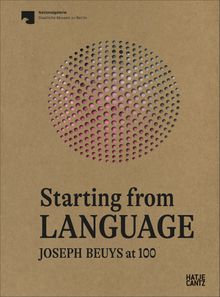 Starting from Language: Joseph Beuys at 100
Starting from Language: Joseph Beuys at 100
Published by Hatje Cantz.
Joseph Beuys (1921–86) regarded language as a material of art. Assembling sculptures, drawings, installations, films, posters and archival documents, Starting from Language underscores this tenet.
PUBLISHER
Hatje Cantz
BOOK FORMAT
Paperback, 8 x 10.5 in. / 208 pgs / 300 color.
PUBLISHING STATUS
Pub Date 9/7/2021
Active
DISTRIBUTION
D.A.P. Exclusive
Catalog: FALL 2021 p. 181
PRODUCT DETAILS
ISBN 9783775750387 FLAT40
List Price: $44.00 CAD $60.00
AVAILABILITY
In stock
in stock $44.00 Free Shipping UPS GROUND IN THE CONTINENTAL U.S. |
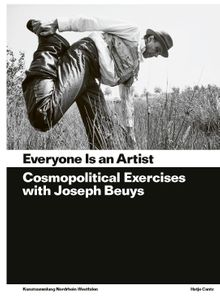 Everyone Is an Artist: Practices in Cosmopolitics with Joseph Beuys
Everyone Is an Artist: Practices in Cosmopolitics with Joseph Beuys
Published by Hatje Cantz.
Edited by Susanne Gaensheimer, Isabelle Malz, Eugen Blume, Catherine Nichols.
In 13 chapters, a wide variety of artists and thinkers offer insight into the unparalleled legacy of Joseph Beuys (1921–86) on the occasion of what would have been the German artist and pedagogue’s 100th birthday. Beuys adopted many roles over the course of his prolific career, but one of the guiding principles throughout his life was a radically expansive view of what art is and what art can do on levels both personal and political. He believed that every human being is an artist and that society could be renewed from the ground up. In this publication, the world’s brightest minds enter into a multilayered dialogue with Beuys and his theses about a possible future conceived through art. Words from Ruth Bader Ginsberg, Angela Davis, Jenny Holzer, William Pope.L, Patti Smith, Thich Nhat Hanh, Greta Thunberg and Malala Yousafzai, among many others, contextualize his vision.
PUBLISHER
Hatje Cantz
BOOK FORMAT
Paperback, 7.5 x 10.25 in. / 336 pgs / 200 color.
PUBLISHING STATUS
Pub Date 8/31/2021
Active
DISTRIBUTION
D.A.P. Exclusive
Catalog: SPRING 2021 p. 105
PRODUCT DETAILS
ISBN 9783775748667 TRADE
List Price: $55.00 CAD $77.00
AVAILABILITY
Out of stock
STATUS: Out of stock Temporarily out of stock pending additional inventory. |
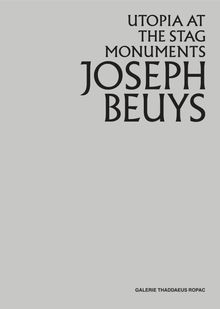 Joseph Beuys: Utopia at the Stag Monuments
Joseph Beuys: Utopia at the Stag Monuments
Published by Galerie Thaddaeus Ropac.
Edited by Kelsey Corbett, Oona Doyle. Foreword by Thaddaeus Ropac. Text by Norman Rosenthal.
Accompanying the most important UK exhibition of Joseph Beuys' (1921–86) work in over a decade, this comprehensive publication traces the development of the artist's practice from his early, rarely seen works to his conceptual environments. At the heart of this exhibition stands Stag Monuments, exhibited whole for the first time since its creation.
PUBLISHER
Galerie Thaddaeus Ropac
BOOK FORMAT
Hardcover, 8.75 x 12 in. / 167 pgs / 93 color / 22 duotone.
PUBLISHING STATUS
Pub Date 8/20/2019
Active
DISTRIBUTION
D.A.P. Exclusive
Catalog: SPRING 2019 p. 186
PRODUCT DETAILS
ISBN 9780995745650 FLAT40
List Price: $55.00 CAD $75.00
AVAILABILITY
In stock
in stock $55.00 Free Shipping UPS GROUND IN THE CONTINENTAL U.S. |
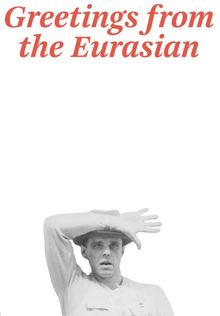 Joseph Beuys: Greetings from the Eurasian
Joseph Beuys: Greetings from the Eurasian
Published by Walther König, Köln.
Beginning with Joseph Beuys’ (1921–86) “Eurasienstab” action, performed with Henning Christiansen at Wide White Space Gallery in Antwerp in 1968, this book documents Beuys' reflections on Eurasia (the combined continental landmass of Europe and Asia).
PUBLISHER
Walther König, Köln
BOOK FORMAT
Flexi, 8 x 11.5 in. / 142 pgs / 50 color / 80 bw.
PUBLISHING STATUS
Pub Date 2/27/2018
Active
DISTRIBUTION
D.A.P. Exclusive
Catalog: SPRING 2018 p. 188
PRODUCT DETAILS
ISBN 9783960982647 FLAT40
List Price: $45.00 CAD $60.00
AVAILABILITY
In stock
in stock $45.00 Free Shipping UPS GROUND IN THE CONTINENTAL U.S. |
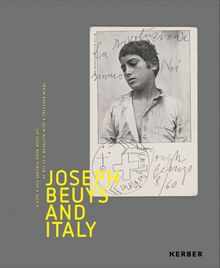 Joseph Beuys and Italy
Joseph Beuys and Italy
Published by Kerber.
Edited with text by Rita E. Täuber. Text by Bruno Corà, Marc Gundel, Magdalena Holzhey, Stefan Nienhaus, Petra Richter, Beat Stutzer, Kirsten Claudia Voigt.
With 100 exhibits, drawings, works on paper, multiples and objects, as well as archival film and audio material, this volume invites readers along on a special journey to Beuys’ Italy.
PUBLISHER
Kerber
BOOK FORMAT
Hardcover, 6.75 x 8.25 in. / 265 pgs / 76 color / 86 bw.
PUBLISHING STATUS
Pub Date 9/27/2016
Out of print
DISTRIBUTION
D.A.P. Exclusive
Catalog: FALL 2016 p. 99
PRODUCT DETAILS
ISBN 9783735602398 TRADE
List Price: $39.95 CAD $53.95
AVAILABILITY
Not available
STATUS: Out of print | 00/00/00 For assistance locating a copy, please see our list of recommended out of print specialists |
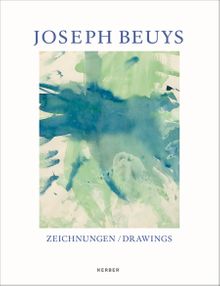 Joseph Beuys: Drawings
Joseph Beuys: Drawings
Published by Kerber.
Edited by Heiner Bastian. Foreword by Poul Erik Tøjner, et al. Text by Heiner Bastian, Aeneas Bastian.
PUBLISHER
Kerber
BOOK FORMAT
Hardcover, 9 x 11.75 in. / 292 pgs / 198 color.
PUBLISHING STATUS
Pub Date 3/31/2014
Out of print
DISTRIBUTION
D.A.P. Exclusive
Catalog: SPRING 2014 p. 112
PRODUCT DETAILS
ISBN 9783866787070 TRADE
List Price: $80.00 CAD $107.50
AVAILABILITY
Not available
STATUS: Out of print | 00/00/00 For assistance locating a copy, please see our list of recommended out of print specialists |
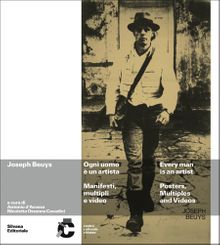 Joseph Beuys: Every Man Is an Artist
Joseph Beuys: Every Man Is an Artist
Posters, Multiples and Videos
Published by Silvana Editoriale.
Text by Antonio d'Avossa, Nicoletta Ossanna Cavadini, Rainner Rappmann.
PUBLISHER
BOOK FORMAT
Paperback, 9.5 x 9.5 in. / 192 pgs / 120 color / 72 bw.
PUBLISHING STATUS
Pub Date 7/31/2013
Out of print
DISTRIBUTION
D.A.P. Exclusive
Catalog: SPRING 2013 p. 104
PRODUCT DETAILS
ISBN 9788836624010 TRADE
List Price: $40.00 CAD $50.00
AVAILABILITY
Not available
STATUS: Out of print | 00/00/00 For assistance locating a copy, please see our list of recommended out of print specialists |
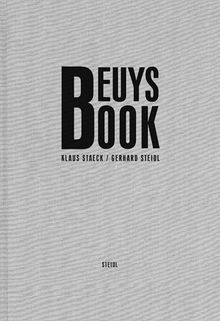 Beuys Book: Klaus Staeck & Gerhard Steidl
Beuys Book: Klaus Staeck & Gerhard Steidl
Published by Steidl Photography International.
PUBLISHER
Steidl Photography International
BOOK FORMAT
Hardcover, 8.5 x 9.5 in. / 200 pgs / illustrated throughout.
PUBLISHING STATUS
Pub Date 2/28/2010
Out of stock indefinitely
DISTRIBUTION
D.A.P. Exclusive
Catalog: FALL 2014
PRODUCT DETAILS
ISBN 9783865219145 TRADE
List Price: $50.00 CAD $67.50
AVAILABILITY
Not available
STATUS: Out of stock indefinitely. |
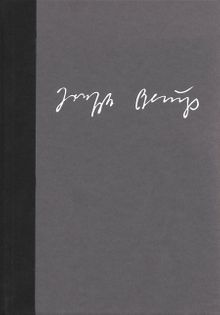 Joseph Beuys: Sculpture and Drawing
Joseph Beuys: Sculpture and Drawing
Published by Zwirner & Wirth.
Edited by Kristine Bell, Greg Lulay, Alexandra Whitney. Text by Alexandra Whitney, Mark Rosenthal.
PUBLISHER
Zwirner & Wirth
BOOK FORMAT
Hardback, 7.75 x 10.75 in. / 64 pgs / 24 color.
PUBLISHING STATUS
Pub Date 2/1/2008
Out of print
DISTRIBUTION
D.A.P. Exclusive
Catalog: SPRING 2008 p. 160
PRODUCT DETAILS
ISBN 9780977356867 FLAT40
List Price: $45.00 CAD $55.00
AVAILABILITY
Not available
STATUS: Out of print | 00/00/00 For assistance locating a copy, please see our list of recommended out of print specialists |
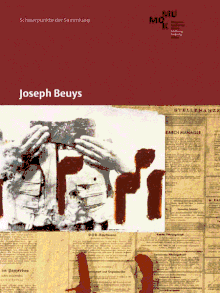 Joseph Beuys: In the Mu Mok Collection
Joseph Beuys: In the Mu Mok Collection
Published by Verlag für moderne Kunst.
Text by Wolfgang Dreschsler, Doris Leutgeb.
PUBLISHER
Verlag für moderne Kunst
BOOK FORMAT
Paperback, 7 x 9.5 in. / 184 pgs / 71color.
PUBLISHING STATUS
Pub Date 3/1/2007
Out of print
DISTRIBUTION
D.A.P. Exclusive
Catalog: SPRING 2007 p. 136
PRODUCT DETAILS
ISBN 9783938821725 TRADE
List Price: $30.00 CAD $40.00
AVAILABILITY
Not available
STATUS: Out of print | 00/00/00 For assistance locating a copy, please see our list of recommended out of print specialists |
 Joseph Beuys: The Multiples
Joseph Beuys: The Multiples
Published by Edition Schellmann.
Edited by Jàrg Schellmann. Essays by Dierk Stemmler, Joan Rothfuss, Jàrg Schellmann and Peter Nisbet. Afterword by James Cuno and Kathy Halbreich.
PUBLISHER
Edition Schellmann
BOOK FORMAT
Hardcover, 8.5 x 12 in. / 544 pgs / 320 color / 540 bw.
PUBLISHING STATUS
Pub Date 3/1/2006
Out of stock indefinitely
DISTRIBUTION
D.A.P. Exclusive
Catalog: SPRING 2006 p. 98
PRODUCT DETAILS
ISBN 9783888142109 TRADE
List Price: $95.00 CAD $127.50 GBP £85.00
AVAILABILITY
Not available
STATUS: Out of stock indefinitely. |
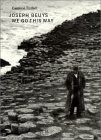 Joseph Beuys: We Go This Way
Joseph Beuys: We Go This Way
Published by Violette Editions.
By Caroline Tisdall. Artwork by Joseph Beuys.
PUBLISHER
Violette Editions
BOOK FORMAT
Hardcover, 8.5 x 11.75 in. / 416 pgs / 416 bw.
PUBLISHING STATUS
Pub Date 1/2/2000
Out of print
DISTRIBUTION
D.A.P. Exclusive
Catalog: FALL 1998
PRODUCT DETAILS
ISBN 9781900828130 TRADE
List Price: $65.00 CAD $87.00
AVAILABILITY
Not available
STATUS: Out of print | 00/00/00 For assistance locating a copy, please see our list of recommended out of print specialists |
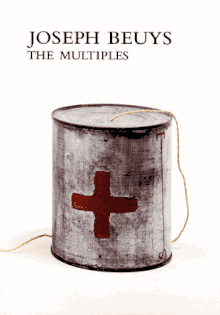 Joseph Beuys: Multiples
Joseph Beuys: Multiples
Published by Edition Schellmann.
Artwork by Joseph Beuys. Edited by Jàrg Schellmann.
PUBLISHER
Edition Schellmann
BOOK FORMAT
Hardcover, 8.5 x 12 in. / 544 pgs / 320 color / 540 bw
PUBLISHING STATUS
Pub Date 4/2/1999
No longer our product
DISTRIBUTION
D.A.P. Exclusive
Catalog: FALL 1997
PRODUCT DETAILS
ISBN 9780935640571 TRADE
List Price: $85.00 CAD $100.00
AVAILABILITY
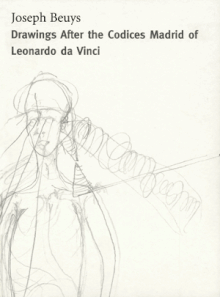 Joseph Beuys: Drawings Based On The Codices Madrid By Da Vinci
Joseph Beuys: Drawings Based On The Codices Madrid By Da Vinci
Published by Dia Art Foundation.
Artwork by Joseph Beuys. Contributions by Martin Kemp. Text by Ann Temkin, Cornelia Lauf.
PUBLISHER
Dia Art Foundation
BOOK FORMAT
Hardcover, 9.25 x 12.25 in. / 200 pgs / 98 color / 44 bw.
PUBLISHING STATUS
Pub Date 5/2/1999
Active
DISTRIBUTION
D.A.P. Exclusive
Catalog: SPRING 1999
PRODUCT DETAILS
ISBN 9780944521342 TRADE
List Price: $60.00 CAD $79.00 GBP £53.00
AVAILABILITY
Out of stock
STATUS: Out of stock Temporarily out of stock pending additional inventory. |
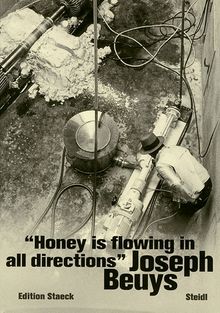 Joseph Beuys: Honey Is Flowing In All Directions
Joseph Beuys: Honey Is Flowing In All Directions
Published by Steidl.
Artwork by Joseph Beuys. Photographs by Klaus Staeck. Contributions by Gerhard Steidl.
PUBLISHER
Steidl
BOOK FORMAT
Hardcover, 8.25 x 11.75 in. / 160 pgs / 110 duotone.
PUBLISHING STATUS
Pub Date 9/2/1997
Out of print
DISTRIBUTION
D.A.P. Exclusive
Catalog: FALL 1997
PRODUCT DETAILS
ISBN 9783882435382 TRADE
List Price: $29.95 CAD $35.00
AVAILABILITY
Not available
STATUS: Out of print | 00/00/00 For assistance locating a copy, please see our list of recommended out of print specialists |
Beuys In America
Published by Steidl.
Artwork by Joseph Beuys.
PUBLISHER
Steidl
BOOK FORMAT
Hardcover, 8.25 x 11.5 in. / 224 pgs / 187 bw.
PUBLISHING STATUS
Pub Date 9/2/1997
Out of print
DISTRIBUTION
D.A.P. Exclusive
Catalog: FALL 1997
PRODUCT DETAILS
ISBN 9783882435399 TRADE
List Price: $29.95 CAD $35.00
AVAILABILITY
Not available
STATUS: Out of print | 00/00/00 For assistance locating a copy, please see our list of recommended out of print specialists |
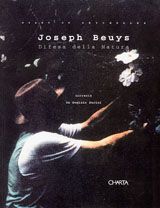 Joseph Beuys: Diary Of Seychelles
Joseph Beuys: Diary Of Seychelles
Published by Charta.
Artwork by Joseph Beuys.
PUBLISHER
Charta
BOOK FORMAT
Paperback, 8.25 x 11 in. / 144 pgs / 10 color / 45 bw.
PUBLISHING STATUS
Pub Date 9/2/1996
No longer our product
DISTRIBUTION
D.A.P. Exclusive
Catalog: FALL 1996
PRODUCT DETAILS
ISBN 9788881580897 TRADE
List Price: $35.00 CAD $40.00
AVAILABILITY
Not available
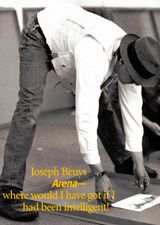 Joseph Beuys: Arena
Joseph Beuys: Arena
Where would I have got if I had been intelligent!
Published by Dia Art Foundation.
Artwork by Joseph Beuys. Text by Pamela Kort, Christopher Phillips.
PUBLISHER
Dia Art Foundation
BOOK FORMAT
Hardcover, 9.25 x 12.25 in. / 300 pgs / 100 color / 30 bw.
PUBLISHING STATUS
Pub Date 3/2/1994
Out of print
DISTRIBUTION
D.A.P. Exclusive
Catalog: SPRING 1994
PRODUCT DETAILS
ISBN 9780944521298 TRADE
List Price: $60.00 CAD $70.00
AVAILABILITY
Not available
STATUS: Out of print | 11/28/2010 For assistance locating a copy, please see our list of recommended out of print specialists |
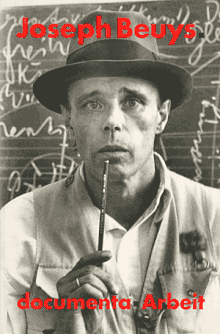 Joseph Beuys: Documenta Work
Joseph Beuys: Documenta Work
Published by Cantz.
By Caroline Tisdall. Artwork by Joseph Beuys. Contributions by Rainer Rappmann. Text by Veit Loers.
PUBLISHER
Cantz
BOOK FORMAT
Paperback, 8.25 x 12 in. / 304 pgs / 48 color / 341 bw
PUBLISHING STATUS
Pub Date 9/2/1993
Out of print
DISTRIBUTION
D.A.P. Exclusive
Catalog: SPRING 1994
PRODUCT DETAILS
ISBN 9783893225804 TRADE
List Price: $50.00 CAD $60.00
AVAILABILITY
Not available
STATUS: Out of print | 4/23/2003 For assistance locating a copy, please see our list of recommended out of print specialists |
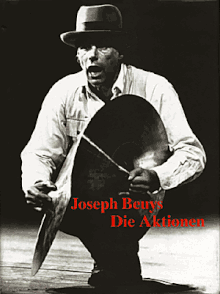 Joseph Beuys: Die Aktionen
Joseph Beuys: Die Aktionen
Published by Hatje Cantz.
Artwork by Joseph Beuys. Contributions by Uwe Schneede.
PUBLISHER
Hatje Cantz
BOOK FORMAT
Hardcover, 8.5 x 11.75 in. / 400 pgs / 370 bw
PUBLISHING STATUS
Pub Date 10/2/1993
Out of print
DISTRIBUTION
D.A.P. Exclusive
Catalog: UNKNOWN 1990
PRODUCT DETAILS
ISBN 9783775704502 TRADE
List Price: $125.00 CAD $150.00
AVAILABILITY
Not available
STATUS: Out of print | 6/1/2001 For assistance locating a copy, please see our list of recommended out of print specialists |
